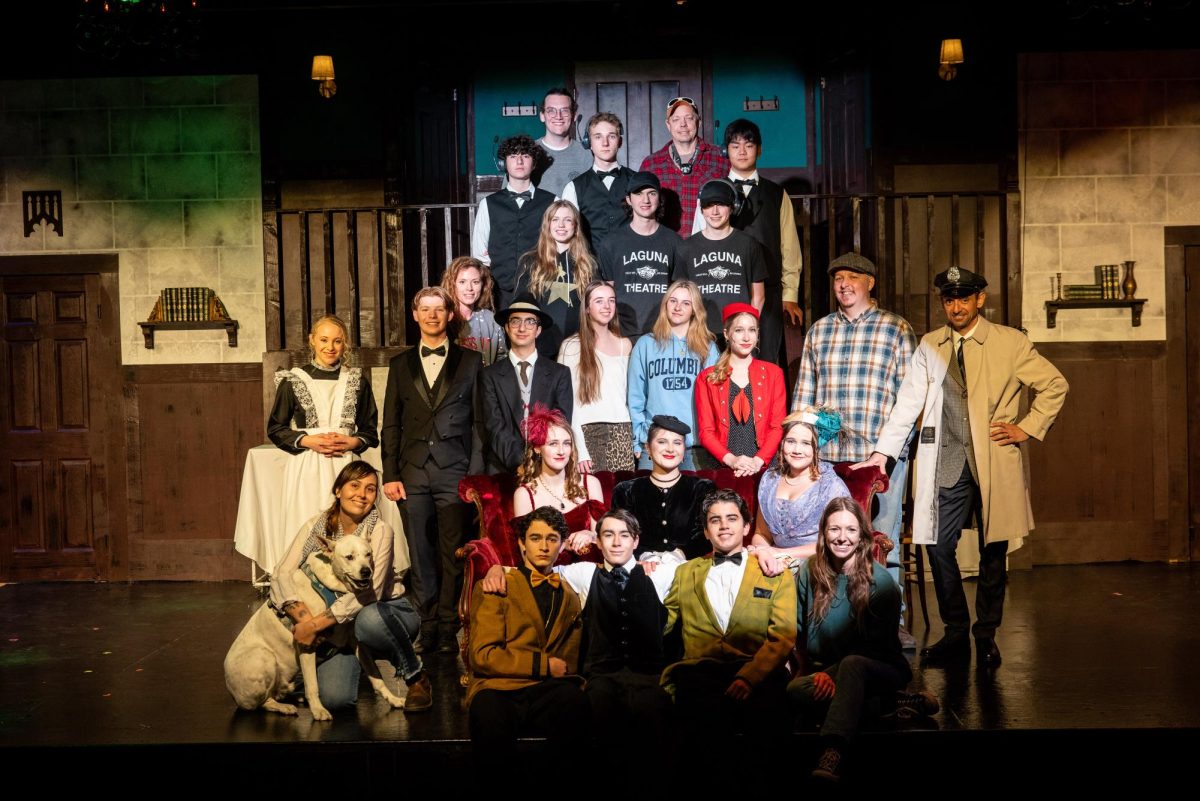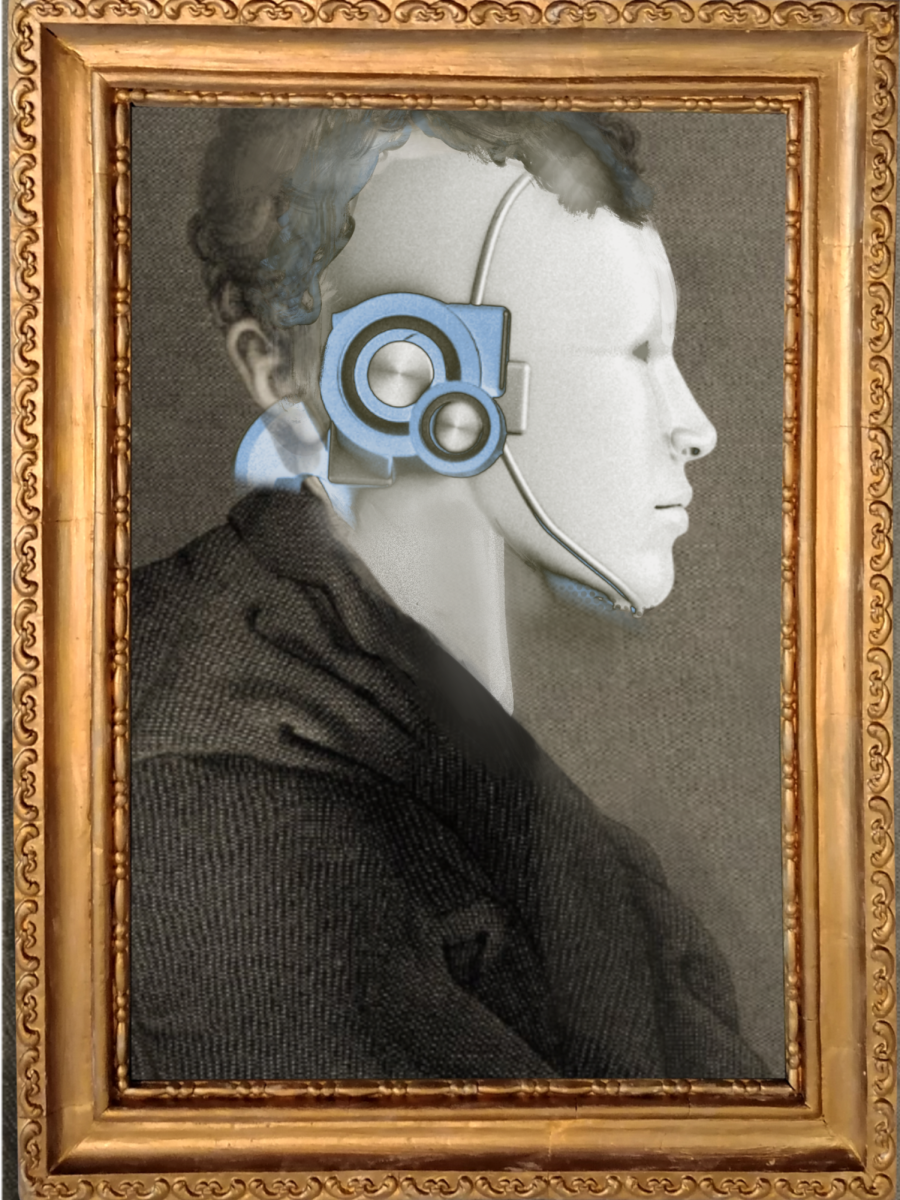Murder… the opening scene of most mystery dramas paints a picture of the horrible crime that sets the whole story in motion. Right from the beginning—the first page of the novel, minute of the podcast, or clip of the movie—the viewer or listener is on the edge of their seat wondering WHO did this? WHY did they do this? And HOW did this happen?
“The mystery of the stories is what initially gets me hooked,” said true crime podcast listener senior Monica Paredes Villegas. “I am trying to figure out who the murderer is, and then, boom, I get new information that leads the investigation in a new direction. It’s about wondering who it is that’s truly behind this whole thing.”
While the shock, the fear, and the adrenaline of seeing, reading, or hearing about crimes is terrifying, the drama of it all is simultaneously intriguing.
Crime mystery stories deal with violent and often disturbing crimes that one would expect the audience to feel fearful of and completely repelled by, yet we can’t stop watching, listening, or reading.
Why are we obsessed with learning about one of our greatest fears (death!!), and what aspects of crime dramas make the stories so appealing despite their horrifying content?
Let’s look at the evidence:
CASEFILE 1:
Exploring the Unkown
We are drawn to and fascinated by occurrences that are out of the ordinary. Like slowing down on the freeway to take a look at a car crash, learning about murder mysteries is captivating because it is unusual, unexpected, and shocking.
“The surprise of the situation and the fact that these things don’t happen very often or do you make it intriguing. You’re very curious about a certain situation even if you have no connection to it because you really just want to know the details,” senior Cyanne Blabey said.
Evolutionary psychology provides some insight into the reason behind human attraction to learning about what we don’t know or don’t understand: it is not despite of, but rather because of, our fears.
What we are afraid of drives us to learn more information in order to better equip ourselves for handling dangerous situations.
Junior Dakota Risley is an avid watcher of horror movies and studied the appeal of horror movies for a Humanities Research project. “[Horror content] is terrifying because it’s unknown to us, and because it is unknown, we are curious. Humans are naturally curious because exploration of the unknown and of potential danger helps to learn in order to survive in this world,” Dakota said.
If you can learn about the motivations, the strategies, and the mental inner workings of a killer, then you can better protect yourself from that criminal.
While instinctively, maybe subconsciously, we want to learn more about murder to protect ourselves from it, the average viewer or reader is not taking notes while they watch their TV show or flip to the next chapter because, while what they learn about is terrifying, there is comfort in the environment they are in.
“Because I am at my home watching a scary movie, I am able to experience those feelings of fear and curiosity but not feel threatened,” Dakota said.
Crime mystery stories, whether in the form of a book, movie, television show, or podcast, are presented in a way that makes the viewer feel invested in the story but distanced from the crime itself.
This content allows you to simultaneously feel fear, a rush of adrenaline, and a little sweat on your palms while lounging on the couch, comfortable with the notion that your fate will not be that of John Doe.
CASEFILE 2: Anyone can be Sherlock Holmes
Though the quintessential investigator may come to mind as a man with a spectacle and trench coat, you do not need a British accent or a giant magnifying glass to solve a mystery. Crime dramas are so entertaining because the viewer is invested in solving the murder right alongside the investigator.
“I am with the investigator, in the same place, thinking the same thing. We’re kind of going through the mystery together,” Monica said.
This genre gets the viewer to hypothesize and theorize outside of actually watching the show or reading the book. We are interested because we are actively a part of what is going on in the story, solving the mystery, involved in the clues, the suspects, and the leads.
We not only become invested in the storyline but also connected to the characters. Often, crime mystery stories are characterized by an investigator who is defined by their intelligence, their wits, and their attention to detail—not their status, job, or age.
The investigator is often not a trained police officer, but rather a seemingly normal person. In the case of TV series like “Only Murders in the Building,” “High Potential,” and “Poker Face,” movies like “Enola Holmes” and “Murder Mystery,” and books such as “Nancy Drew,” and the C.B. Strike series, it is the unexpected, the underdog, the average person who solves the mystery. The audience sees themselves in these characters because they are relatable.
Since the person on the screen or in the book can solve the case, so can you. With crime stories, the viewer does exactly this, and as a result, becomes invested in the story and in the outcome.
“With these shows, I am constantly thinking about what’s going to happen because it’s like an unpredictable puzzle. I love puzzles, and this is one I can piece together and solve,” senior Siena Wyatt said.
CASEFILE 3: Putting the
Pieces Together
In the chaos of our lives—work, school, tests, that one assignment you still need to submit—we crave a sense of organization, the feeling of having control, and even if it is just for 30 minutes, crime mystery stories provide that.
What begins as disorganization, confusion, and seemingly useless leads and dead-ends becomes a linear solution. You flip the page, click to the next episode, and stay up later than you originally intended, in order to learn more, in order to find the answers, and find the killer.
“I keep watching because of the mystery of it all. I ask myself, what’s going to happen next? And wanting to find the answers is what keeps me intrigued,” Monica said.
In our real lives, with endless questions, instability, and chaotic disorganization, it is nice to see one problem solved and figured out. Everything begins tangled and confused, and then it becomes logical.
This is the part where the investigator reveals who did it, why, and how. This is when they connect the dots, the moment of epiphany, the moment when the killer is brought to justice.
“This is the best part,” Cyanne said. “When it all comes together it makes so much sense at the end. It is always the most satisfying part when the whole story is wrapped up.”
The evidence shows that we are infatuated with crime mystery stories because of their complex, horrifying, and thrilling aspects because they deal with unfamiliar and scary topics because we become deeply invested in the who, how, and why of each investigation, and because we crave the answers and organization that these crime dramas provide.
The mystery behind our fascination with these frightening stories is finally solved…
CASE CLOSED.






























